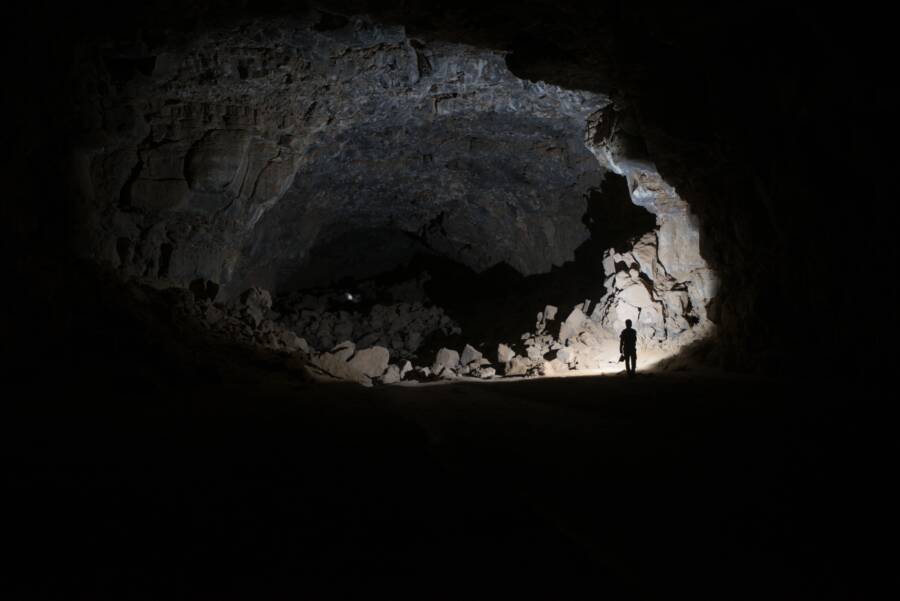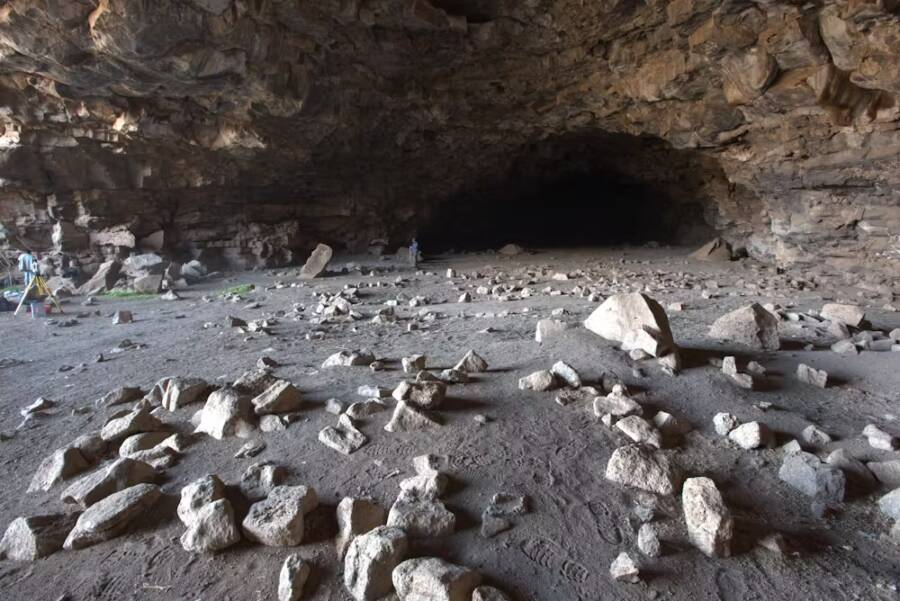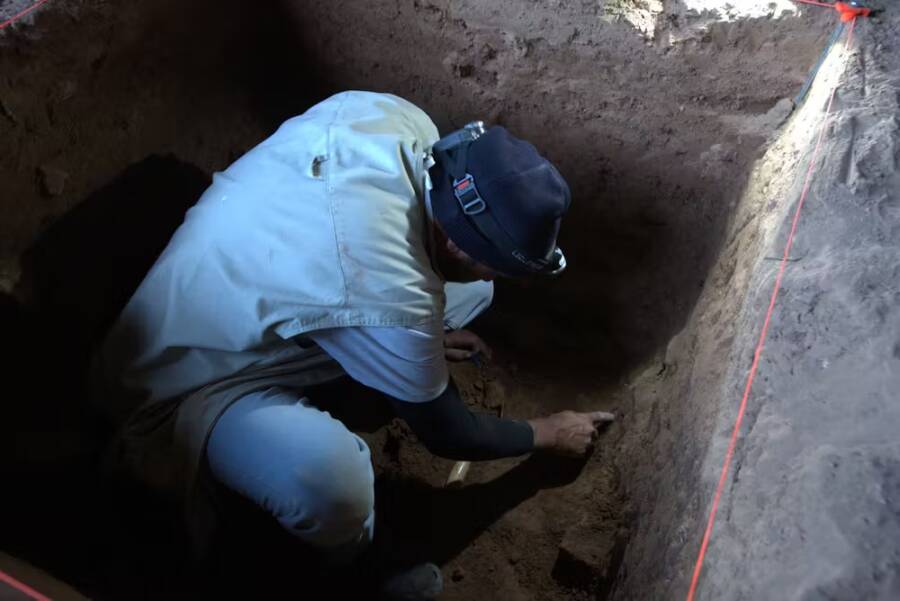Starting at least 7,000 years ago, prehistoric humans in the Arabian Desert used the Umm Jirsan cave as shelter from the blistering heat of the arid landscape above.

Green Arabia ProjectResearchers deep within the Umm Jirsan cave structure.
Northern Arabia’s place in the development and evolution of prehistoric humankind has been well documented, but certain aspects of life in the region have long eluded researchers. This is largely because organic remains are not easily preserved for thousands of years in such arid desert regions.
However, millennia-old remnants can be found within the caves beneath the sand.
According to a new study published in PLoS ONE, an underground lava tube called Umm Jirsan is home to a number of prehistoric artifacts, rock art, and human and animal remains that offer illuminating insights into the lives of humans in northern Arabia as far back as 7,000 years ago.
How Underground Lava Tubes Served As Key Waypoints For Prehistoric Humans
Located in the volcanic field of Harrat Khaybar in Saudi Arabia, Umm Jirsan serves as a natural catalog of nearly 7,000 years of human history, showing signs of repeated human occupation.
“Despite the visibility of these sites, only in the past decade or so have archaeologists taken a dedicated interest in them. Some of the structures have now been dated at up to 10,000 years old,” study author Matthew Stewart writes for The Conversation. “However, the arid climate, baking days, and freezing nights, and intense wind erosion are not kind to some of the other relics archaeologists prize.”

Green Arabia ProjectPiles of animal bones along the eastern passage of Umm Jirsan.
According to Stewart, despite the staggering number of such sites across the region, it was only within the past decade that archaeologists began to take serious interest in examining them.
One of the most revealing sites — and the focus of the study — was Umm Jirsan, a nearly mile-long tube formed by cooling lava, roughly 78 miles north of the city of Medina.
Stewart writes that the tube’s floor “is strewn with piles of bones containing thousands — if not hundreds of thousands — of exceptionally preserved fossils,” which are “the work of striped hyenas.”
These hyenas dragged the animal bones underground, storing them away either to feed cubs or for times when food was scarce.
Many of these bones belonged to domesticated sheep and goats, indicating that pastoral herders moved their livestock through the region thousands of years ago.
Additionally, researchers found evidence of cereal and fruit, likely attributable to an increase in oasis agriculture throughout the region.

Green Arabia ProjectResearcher Badr Zahrani examining Umm Jirsan cave.
Based on analysis of the remains at the site, researchers determined that livestock subsisted on wild grasses and shrubs while humans in the region consumed a protein-rich diet, which later evolved to include the cereals and fruits.
It’s likely that Umm Jirsan, and other volcanic tube sites like it, served more as a place of temporary respite rather than permanent residence. Still, based on the recent analysis, it’s clear that the site was vital as a waypoint along pastoral routes in a climate that could often be harsh.
But food scraps and skeletal remains were not the only things researchers found at the site.
The Enlightening Artifacts Found Within Umm Jirsan
Alongside organic remains found at Umm Jirsan, researchers came across hundreds of artifacts made from basalt, chert, and obsidian, as well as rock art dating back thousands of years.
Dating the charcoal and sediment in which the objects were found, researchers determined that the main occupation phase of the lava tube was likely between 7,000 and 10,000 years ago.
The rock art found at Umm Jirsan — which depicts scenes of herding cattle, sheep, and goats, as well as hunting scenes involving dogs — is the first found in the region, though it has much in common with similar rock art found in Arabia from the Neolithic era and the Bronze Age.

Stewart et al. 2024/PLoS ONERock art found along the walls of Umm Jirsan.
Most notably, Stewart notes that many of the engravings overlap, indicating repeated visitation to the cave over thousands of years.
Researchers made another fascinating discovery when looking over maps of archaeological structures in the area, noticing that Umm Jirsan sits along a “funerary avenue” that connects two major oases.
These funerary avenues are miles-long lengths of tombs marked by stone monuments along ancient routes, most of which were constructed between the mid-to-late third millennium B.C.E.
Recent research into these funerary avenues indicates that they were likely well-worn travel routes used by Bronze Age pastoralists, which provides further evidence for the theory that Umm Jirsan was an often-frequented waypoint.
“We think Umm Jirsan may have been a stopping-off point for pastoralists,” Stewart writes, “a place that offered shelter and water in an otherwise dry and harsh environment.”
After reading about the fascinating discoveries in Umm Jirsan, learn more about ancient Saudi Arabia by exploring Hegra, the city that sat untouched for nearly 2,000 years. Then, learn about Jinn, the genies of ancient Arabian mythology.





